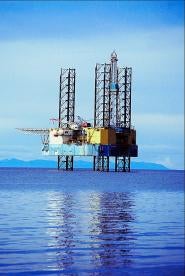With a new President on the White House doorstep, President Obama has announced a ban – ostensibly permanent – on offshore oil and gas drilling in federal waters along the Eastern seaboard and offshore Alaska. President Obama appears to be relying upon a seldom-used provision of the 1953 Outer Continental Shelf Lands Act (“OCSLA”) 43 U.S.C. §§ 1331 et seq.), which allows the President to withdraw any “unleased lands of the outer Continental Shelf.” Whether the ban proves permanent is likely to be tested politically and legally, as the Trump Administration takes office alongside a Republican-controlled Congress.
OCSLA and the Authority to Ban
OCSLA mandates that the Secretary of the Interior expeditiously develop the resources on the submerged lands three or more nautical miles offshore the coast of the United States. The purpose of OCSLA is “to assert the exclusive jurisdiction and control of the Federal Government of the United States over the seabed and subsoil of the outer Continental Shelf, and to provide for the development of its vast mineral resources.” See S. Rep. No. 411 (June 15, 1953) (the “1953 Senate Report”). The Secretary implements the mandate through a leasing program that involves auctions in which developers compete to acquire OCS leases. The program is administered and enforced by the Bureau of Ocean Energy Management (“BOEM”), the Bureau of Safety and Environmental Enforcement (“BSEE”), and the Office of Natural Resources Revenue (“ONRR”).
Section 12(a) of OCSLA provides that “the President of the United States may, from time to time, withdraw from disposition any of the unleased lands of the outer Continental Shelf.” 43 U.S.C.A. § 1341(a). In his announcement on December 20, President Obama indicated his intention to remove federal submerged lands in the Atlantic and Arctic from future leasing. Shortly after the November 2016 election, the Obama Administration had already removed any Atlantic and almost all Arctic lease sales from the auction schedule through 2022, but this announcement appeared to go further by triggering the President’s authority under Section 12(a) to withdraw certain OCS lands from the leasing program indefinitely.
Prior Leasing Moratoria
Historically, Congress has been the one to bar certain regions on the OCS from leasing, but Presidential withdrawals under Section 12(a) have also occurred. Congress first enacted a moratorium in 1982 as part of an appropriations bill, removing three-quarters of a million acres offshore California from federal leasing. Because appropriations bills only cover one fiscal year, the moratorium lasted only a year, but Congress passed new moratoria in subsequent years, generally for areas offshore California, but also in the North Atlantic and the Eastern Gulf of Mexico.
In 1990, President George H.W. Bush issued a Presidential statement – not expressly relying upon OCSLA Section 12(a) – to state his support for a moratorium on new leasing offshore most of California, Oregon, Washington, the North Atlantic, and the Eastern Gulf of Mexico. But the President limited the duration of the ban, setting it to expire in 2000 (or 1996 in the case of certain subareas offshore California). In 1998, President Clinton announced similar withdrawals through 2012, expressly on the basis of Section 12(a).
In January 2007, President George W. Bush modified President Clinton’s withdrawal by narrowing it, and in July 2008 he modified his own 2007 withdrawal and two prior withdrawals by President George H.W. Bush and President Clinton. He also threatened to veto any appropriations bill that sought to renew the Congressional ban. Without the votes to override the veto, Congress stopped banning offshore leasing, until Congress passed the Gulf of Mexico Security Act in 2006, which locked up most of the Eastern Gulf of Mexico until 2022.
As this history indicates, both Democratic and Republican Presidents have used Section 12(a) to ban leasing for periods of time that encroached on future Administrations (even before knowing the political persuasion of those later Administrations). Likewise, later Presidents have modified (in particular, narrowed) the withdrawals made by prior Presidents and have done so under the authority of Section 12(a).
The New Ban
President Obama has not yet publicly released the language by which he apparently intends to invoke Section 12(a), but his announcement leaves little doubt that it will cover much of the OCS offshore the Atlantic seaboard and Alaska. Moreover, it is clear that he intends the ban to be indefinite – that is, without a sunset date. Some proponents of the ban argue that the decision is irrevocable because Section 12(a) only works ‘one way,’ authorizing withdrawals but remaining silent about the rescission of withdrawals. Others may argue that Section 12(a) itself contemplates change, as it refers to decisions made “from time to time,” and in any event prior withdrawals have been modified numerous times in the past. Moreover, they may argue, an irrevocable ban would flout OCSLA’s imperative to develop the offshore for the nation’s benefit subject to balancing considerations of the environment, competition, and national defense. Inherent in this balancing mandate is that the balance must be struck anew from time to time, as the weight of the statutory considerations changes in the balance.
As with many of President Obama’s environmental and energy initiatives, we anticipate this latest move will be challenged in federal court and through political efforts in Congress, which penned the withdrawal authority in Section 12(a). As the recent presidential election has shown, the balance of power and policy can shift, from time to time.




 />i
/>i

